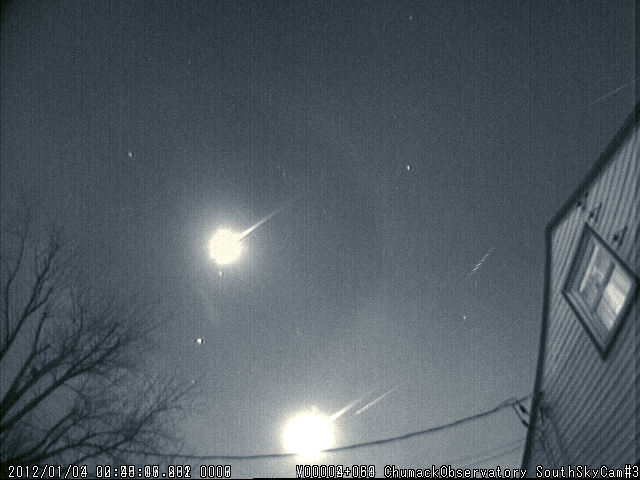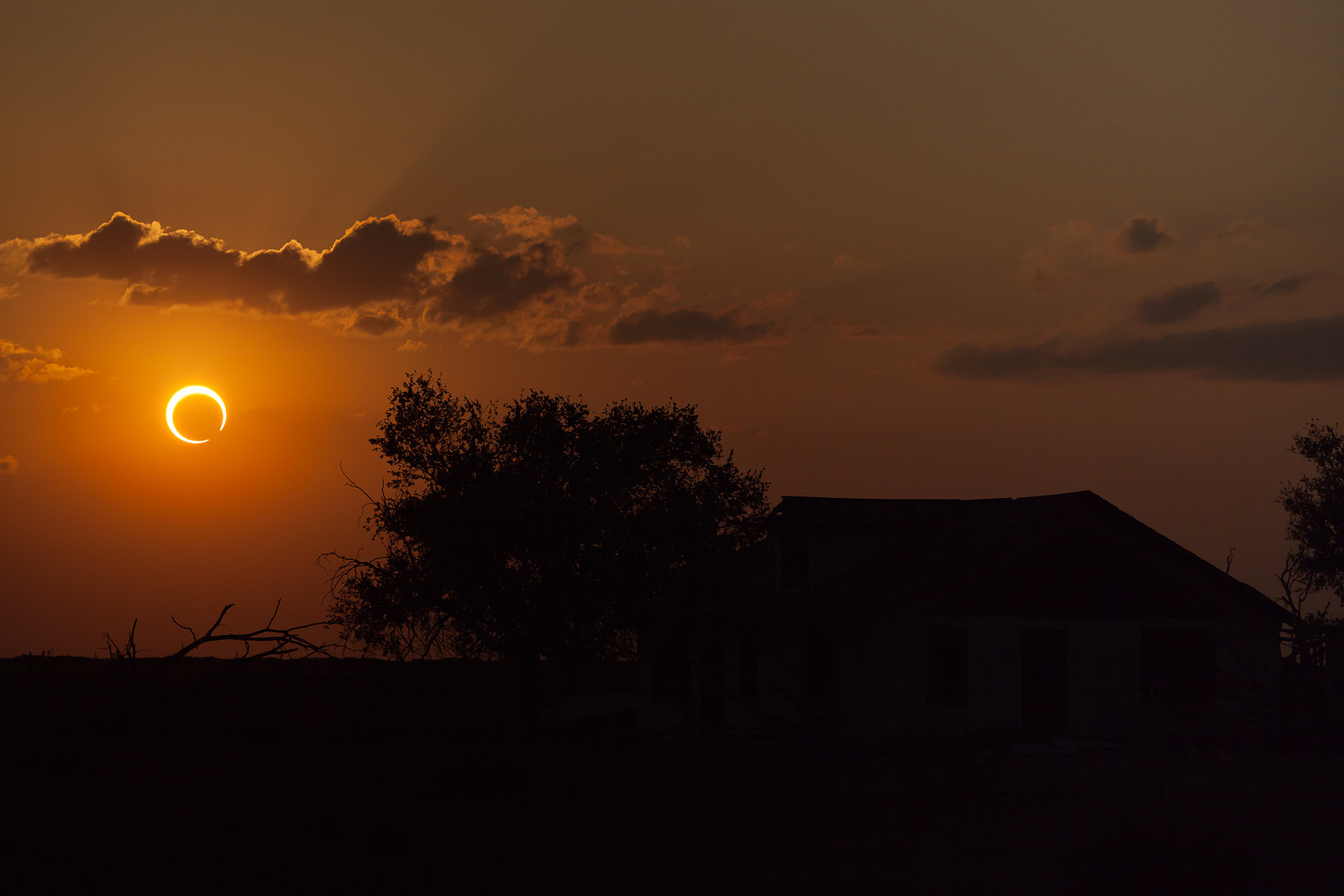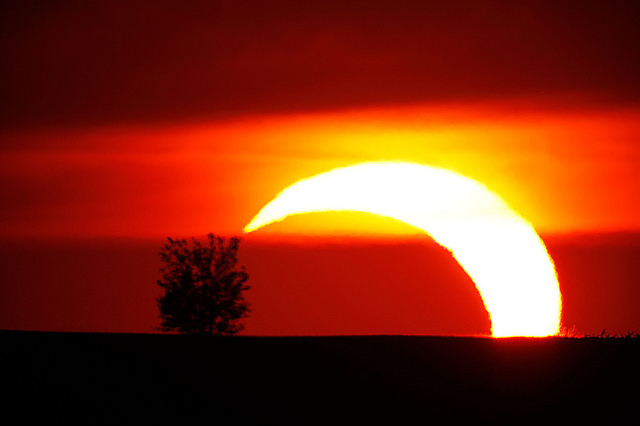Happy New Year! The beginning of the first month of the year is always a busy one for astronomy, and January 2019 is no different, as the Earth reaches perihelion, the Quadrantid meteors peak, and a partial solar eclipse crosses the Pacific… all this week. Continue reading “Quadrantid Meteors Kickoff a Busy January 2019”
Mars Meets the MiniMoon During the Longest Total Lunar Eclipse of the Century
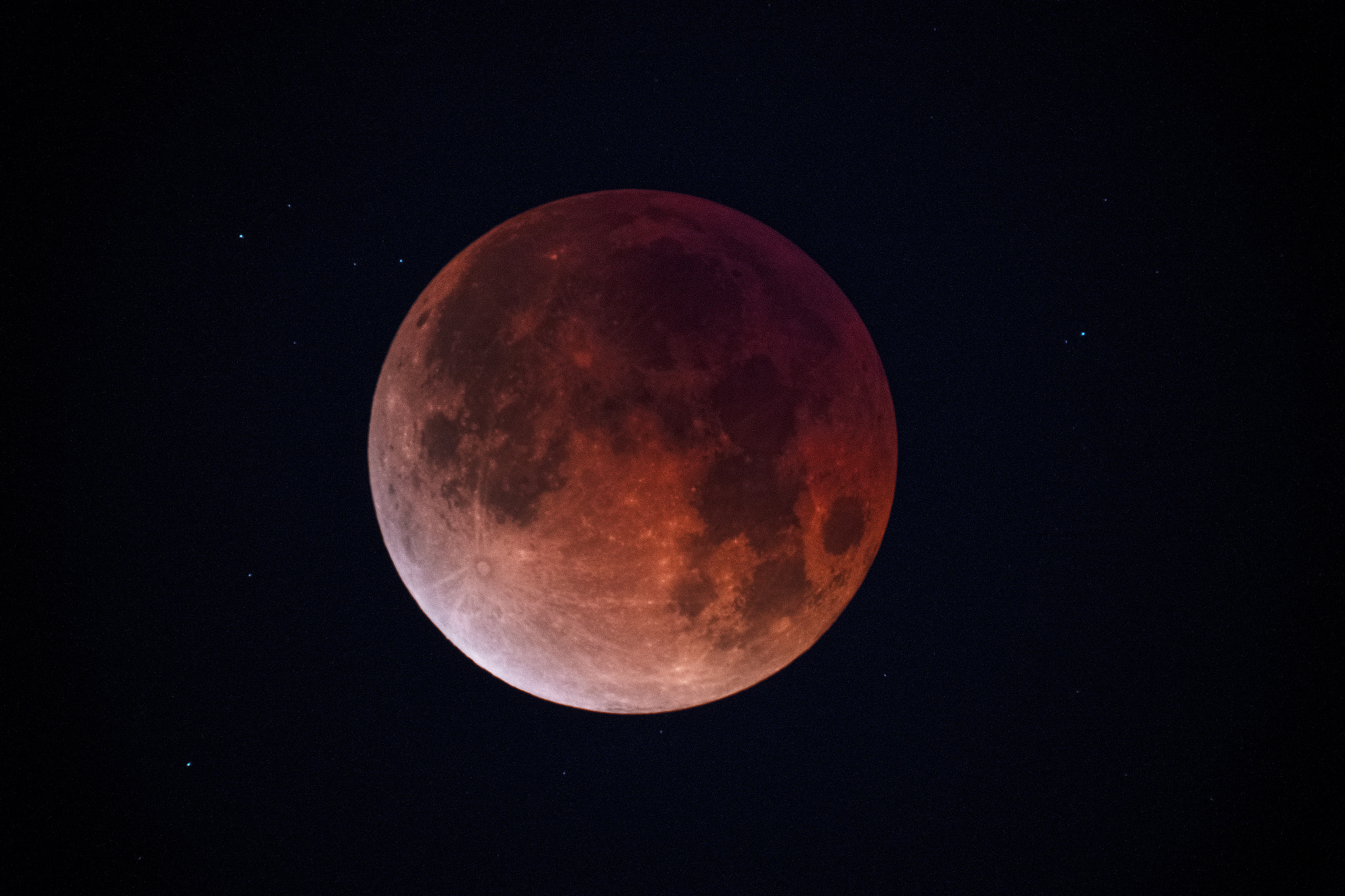
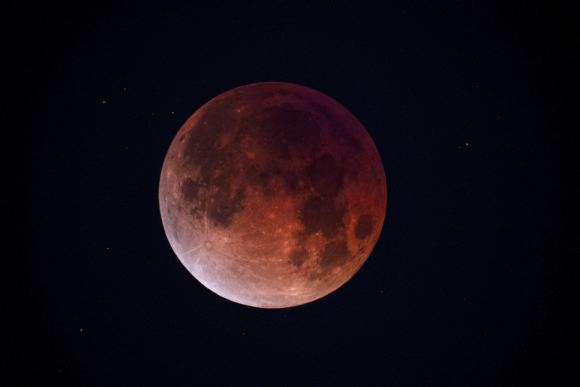
The Blood Moon cometh.
One of the top astronomy events of 2018 occurs on the evening of Friday, July 27th, when the Moon enters the shadow of the Earth for a total lunar eclipse. In the vernacular that is the modern internet, this is what’s becoming popularly known as a “Blood Moon,” a time when the Moon reddens due to the refracted sunlight from a thousand sunsets falling upon it. Standing on the surface of the Moon during a total lunar eclipse (which no human has yet to do) you would see a red “ring of fire” ’round the limb of the eclipsed Earth.
This is the second total lunar eclipse for 2018, and the middle of a unique eclipse season bracketed by two partial solar eclipses, one on July 13th, and another crossing the Arctic and Scandinavia on August 11th.
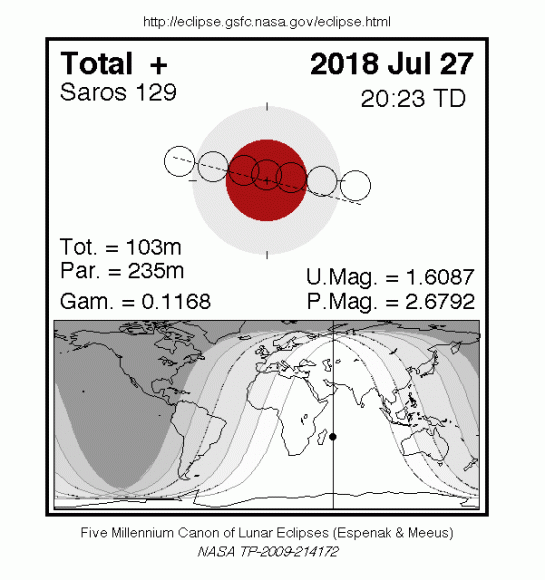
The July 27th total lunar eclipse technically begins around 17:15 Universal Time (UT), when the Moon enters the bright penumbral edge of the Earth’s shadow. Expect the see a slight shading on the southwest edge of the Moon’s limb about 30 minutes later. The real action begins around 18:24 UT, when the Moon starts to enter the dark inner umbra and the partial phases of the eclipse begin. Totality runs from 19:30 UT to 21:13 UT, and the cycle reverses through partial and penumbral phases, until the eclipse ends at 23:29 UT.
Centered over the Indian Ocean region, Africa, Europe and western Asia get a good front row seat to the entire total lunar eclipse. Australia and eastern Asia see the eclipse in progress at moonset, and South America sees the eclipse in progress at moonrise just after sunset. Only North America sits this one out.
Now, this total lunar eclipse is special for a few reasons.
First off, we’ll have the planet Mars at opposition less than 15 hours prior to the eclipse. This means the Red Planet will shine at a brilliant magnitude -2.8, just eight degrees from the crimson Moon during the eclipse, a true treat and an easy crop to get both in frame. We fully expect to see some great images of Mars at opposition along with the eclipsed Moon.
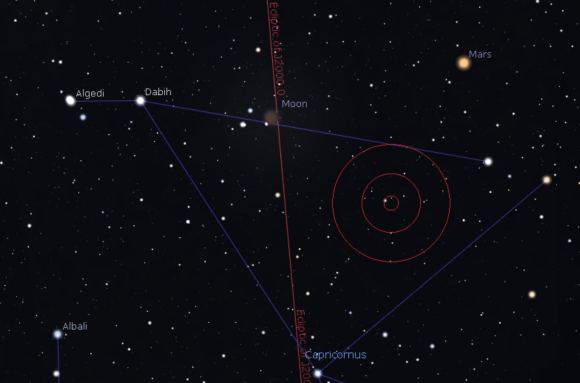
How close can the two get? Well, stick around until April 27th, 2078 and you can see the Moon occult (pass in front of) Mars during a penumbral lunar eclipse as seen from South America.
And speaking of occultations, the Moon occults some interesting stars during totality Friday, the brightest of which is the +5.9 magnitude double star Omicron Capricorni (SAO 163626) as seen from Madagascar and the southern tip of Africa. Omicron Capricorni has a wide separation of 22″.
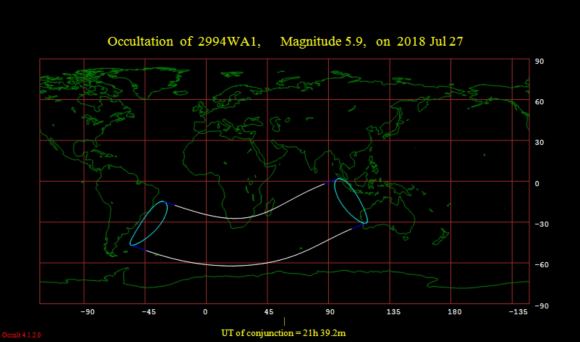
The second unique fact surrounding this eclipse is one you’ve most likely already heard: it is indeed the longest one for this century… barely. This occurs because the Moon reaches its descending node along the ecliptic on July 27th at 22:40 UT, just 21 minutes after leaving the umbral shadow of the Earth. This makes for a very central eclipse, nearly piercing the umbral shadow of the Earth right through its center.
Totality on Friday lasts for 1 hour, 42 minutes and 57 seconds. This was last beat on July 16th, 2000 with a duration of 1 hour, 46 minutes and 24 seconds (2001 is technically the first year of the 21st century). The duration for Friday’s eclipse won’t be topped until June 9th 2123 (1 hour 46 minutes six seconds), making it the longest for a 123 year span.
The longest total lunar eclipse over the span of 5,000 years from 2000 BC to 3000 AD was on May 31st, 318 AD at 106.6 minutes in duration.
A Minimoon Eclipse
Finally, a third factor is assisting this eclipse in its longevity is the onset of the MiniMoon: The Moon reaches apogee at July 27th, 5:22 UT, 14 hours and 37 minutes prior to Full and the central time of the eclipse. This is the most distant Full Moon of the year for 2018 (406,222 km at apogee) the 2nd most distant apogee for 2018. Apogee on January 15th, beats it out by only 237 kilometers. This not only gives the Moon a slightly smaller size visually at 29.3′, versus 34.1′ near perigee, less than half of the 76′ arcminute diameter of the Earth’s shadow. This also means that the Moon is moving slightly slower in its orbit, making a more stately pass through the Earth’s shadow.

What will the Moon look like during the eclipse? Not all total lunar eclipses are the same, but I’d expect a dark, brick red hue from such a deep eclipse. The color of the Moon during a eclipse is described as its Danjon number, ranging from a bright (4) to dark murky copper color (0) during totality.
Tales of the Saros
This particular eclipse is member 38 of the 71 lunar eclipses in saros series 129, running from June 10th, 1351 all the way out to the final eclipse in the series on July 24th, 2613 AD. If you caught the super-long July 16th, 2000 eclipse (the longest for the 20th century) then you saw the last one in the series, and the next one for the series occurs on August 7th, 2036. Collect all three, and you’ve completed a triple exeligmos series, a fine word in Scrabble to land on a triple word score.
Photographing the Moon
If you can shoot the Moon, you can shoot a total lunar eclipse, though a minimum focal length lens of around 200mm is needed to produce a Moon much larger that a dot. The key moment is the onset of totality, when you need to be ready to rapidly dial the exposure settings down from the 1/100th of a second range down to 1 second or longer. Be careful not to lose sight of the Moon in the viewfinder all together!
Are you watching the eclipse during moonrise or moonset? This is a great time to shoot the eclipsed Moon along with foreground objects… you can also make an interesting observation around this time, and nab the eclipsed Moon and the Sun above the local horizon at the same time in what’s termed a selenelion. This works mainly because the Earth’s shadow is larger than the apparent diameter of the Moon, allowing it to be cast slightly off to true center after sunrise or just before sunset. Gaining a bit of altitude and having a low, flat horizon helps, as the slight curve of the Earth also gives the Sun and Moon a tiny boost. For this eclipse, the U2-U3 umbral contact zone for a selenelion favors eastern Brazil, the UK and Scandinavia at moonrise, and eastern Australia, Japan and northeastern China at moonset.
Incidentally, a selenelion is the second visual proof you see during a lunar eclipse that the Earth is indeed round, the first being the curve of the planet’s shadow seen at all angles as it falls across the Moon.
Another interesting challenge would be to capture a transit of the International Space Station during the eclipse, either during the partial or total phases… to our knowledge, this has never been done during a lunar eclipse. This Friday, South America gets the best shots at a lunar eclipse transit of the ISS:
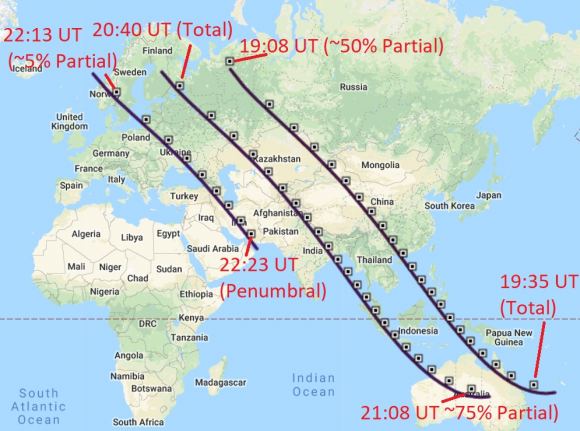
Be sure to check CalSky for a transit near you.
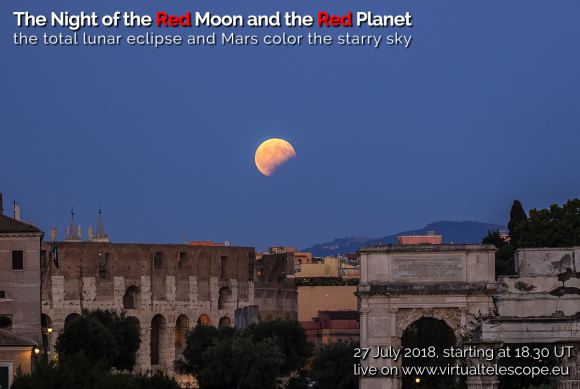
Live on the wrong continent, or simply have cloudy skies? Gianluca Masi and the Virtual Telescope Project 2.0 have you covered, with a live webcast of the eclipse from the heart of Rome, Italy on July 27th starting at 18:30 UT.
Be sure to catch Friday’s total lunar eclipse, either in person or online… we won’t have another one until January 21st, 2019.
Learn about eclipses, occultations, the motion of the Moon and more in our new book: Universe Today’s Guide to the Cosmos: Everything You Need to Know to Become an Amateur Astronomer now available for pre-order.
Get Set For a “Super Blue Blood Moon Total Lunar Eclipse”
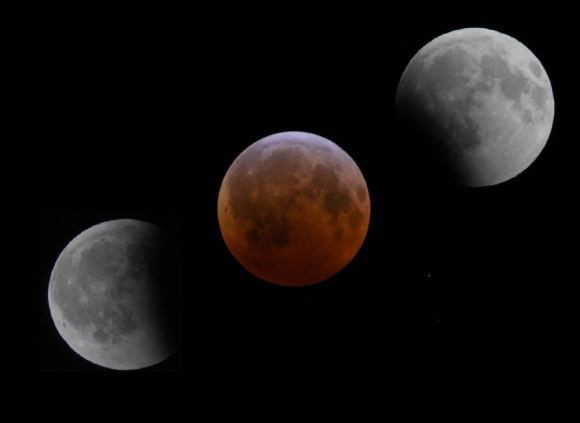
Can you feel the tremor in the Force? Early next Wednesday morning internet astro-memes collide, in one of the big ticket sky events of the year, with a total lunar eclipse dubbed as — get ready — a Super Blue Blood Moon total lunar eclipse.
Specifics on the eclipse: That’s a mouthful, for sure. This is the first eclipse of 2018, and only one of two featuring totality, lunar or solar. Wednesday morning’s eclipse favors the region centered on the Pacific Rim, with regions of Asia and Australia seeing the evening eclipse at moonrise, while most of North America will see totality early Wednesday morning at moonset. Only the regions of the Canadian Maritimes and the United States east of the Mississippi misses out on the spectacle’s climax, catching a partially eclipsed Moon setting in the west at sunrise.
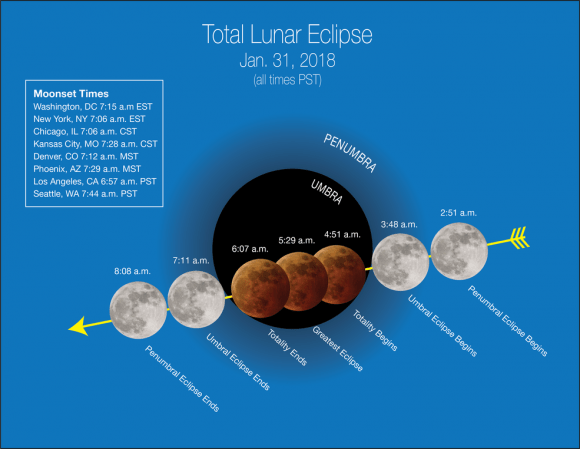
2018 features four eclipses overall, two lunar and two solar. Paired with this eclipse is a partial solar eclipse on February 15th favoring the very southern tip of South America, followed by another total lunar eclipse this summer on July 27th. The final eclipse for 2018 is a partial solar eclipse on August 11th, favoring northern Europe and northeastern Asia.
What’s all the fuss about? Let’s dissect the eclipse, meme by meme:
Why it’s Super: Totality for this eclipse lasts 1 hour, 16 minutes and 4 seconds, the longest since April 15th, 2014. Full Moon (and maximum duration for this eclipse) occurs at 13:30 Universal Time (UT), just 27 hours after the Moon reaches perigee the day prior on January 30th at 9:55 UT . Note that this isn’t quite the closest perigee of the year in space and time: the January 1st Full Moon perigee beat it out for that title by 2,429 km (1509 miles) and 23 hours.
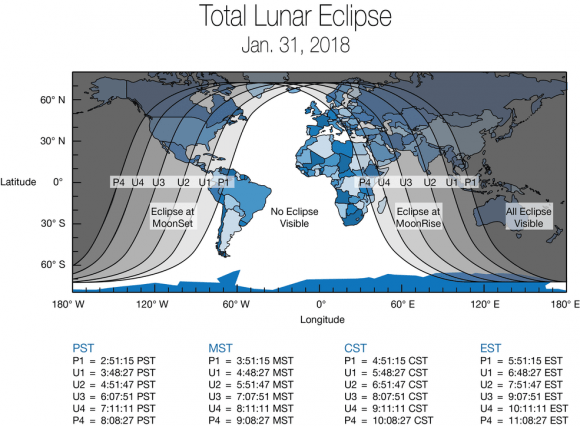
Why it’s Blue: This is the second Full Moon of the month, making this month’s Moon “Blue” in the modern sense of the term. This definition comes down to us thanks to a misinterpretation in the July 1943 issue of Sky & Telescope. The Maine Farmer’s Almanac once used an even more convoluted definition of a Blue Moon as “the third Full Moon in an astronomical season with four,” and legend has it, used blue ink in the almanac printing to denote that extra spurious Moon… anyone have any old Maine Farmer’s Almanacs in the attic to verify the tale?
Note that Blue Moons aren’t all that rare… the month of March 2018 also hosts two Full Moons, while truncated February 2018 contains none, sometimes referred to as a “Black Moon”.
Why All the Blood: The cone of the Earth’s umbra or dark inner shadow isn’t completely devoid of light. Instead, you’re seeing sunlight from all the Earth’s sunrises and sunsets around its limb, filtered into the shadow of the the planet onto the nearside of the Moon. Standing on the Earthward facing side of the Moon, you would witness a solar eclipse as the Earth passed between the Moon and the Sun. Unlike the neat near fit for solar eclipses on the Earth, however, solar eclipses on the Moon can last over an hour, as the Earth appears about three times larger than the disk of the Sun. And although astronauts have witnessed eclipses from space, no human has yet stood on the Moon and witnessed the ring of fire surrounding the Earth during a solar eclipse.
Tales of the Saros: For saros buffs, this eclipse is member 49 of 74 lunar eclipses for lunar saros cycle 124, stretching all the way back to August 17th, 1152. If you caught the total lunar eclipse on January 21st, 2000, you saw the last eclipse in this cycle. Stick around until April 18th, 2144 AD and you can watch the final total lunar eclipse for saros 124.
Unlike total solar eclipses, lunar eclipses are leisurely affairs. The entire penumbral phase of the eclipse lasts for over 5 hours, though you probably won’t notice the subtle shading on the limb of the Moon until its about halfway immersed in the Earth’s penumbral shadow.
Not all total lunar eclipses are the same. Depending on how deep the Moon passes through the Earth’s shadow and the murkiness of the Earth’s atmosphere, the Moon can appear anywhere from a sickly orange, to a deep brick red during totality… for example, the Moon almost disappeared entirely during a total lunar eclipse shortly after the eruption of Mount Pinatubo in the early 1990s!
The color of the Moon during totality is known as its Danjon Number, with 4 being bright with a bluish cast on the outer limb of the Moon, and 0 appearing dark and deep red.
This is also one of the only times you can see that the Earth is indeed round with your own eyes as the curve of the shadow cast by our homeworld falls back across the Moon. This curve is the same, regardless of the angle, and whether the Moon is high above near the zenith, or close to the horizon.
Don’t miss the first eclipse of 2018 and the (deep breath) super blue blood Moon total lunar eclipse!
-Clouded out, or on the wrong side of the planet? Watch the January 31st eclipse live courtesy of the Virtual Telescope Project.
Incredible Solar Eclipse Images From Our Readers
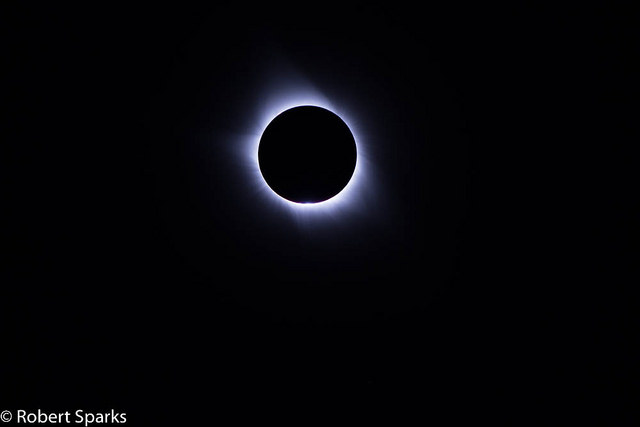
Holy moly, that was awesome! Incredible, fantastic, amazing…there just aren’t the words to describe what it is like to experience totality. While I’m trying to come down to Earth and figure out how to explain how wonderful this was, enjoy the beautiful images captured by our readers from across the US and those from across the world who traveled to capture one of nature’s most spectacular events: a total solar eclipse.
The images from those seeing partial eclipses are wonderful, as well, and we’ll keep adding them as they come in (update, we just got some from Europe too). Great job everyone!

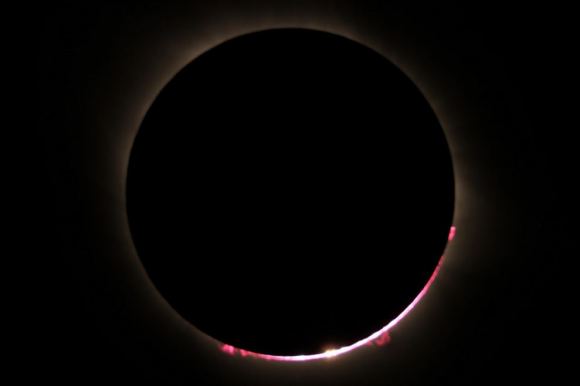
Celestron C8 Telescope on CGEM. Canon T3i (Modified IR enhanced), Solar Filter. Credit and copyright: Michael Bee.
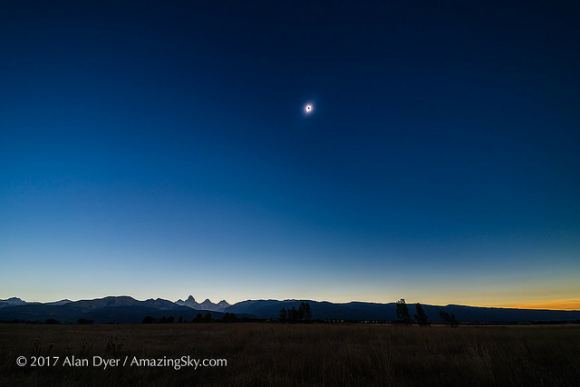
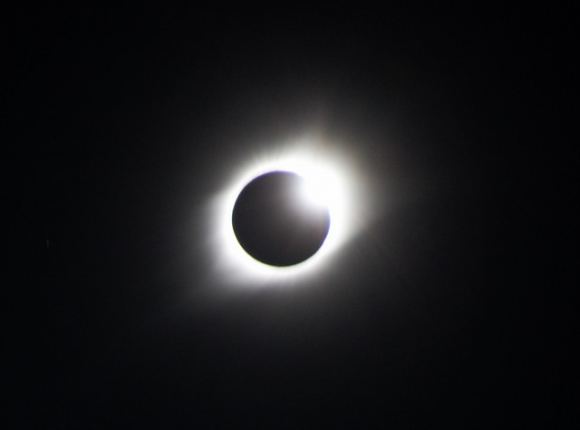
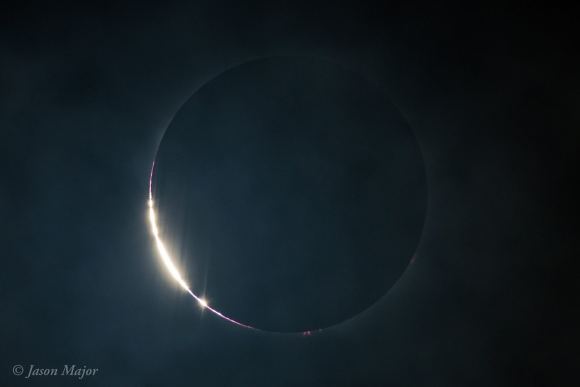

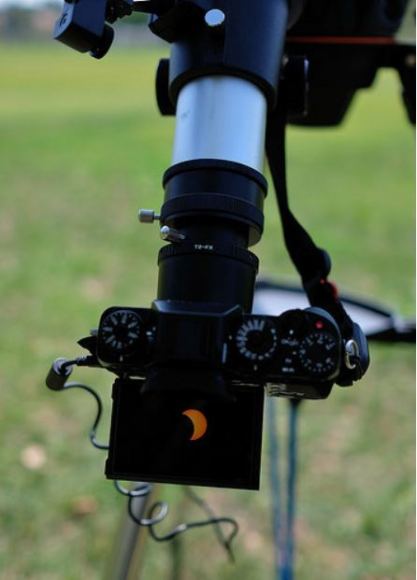
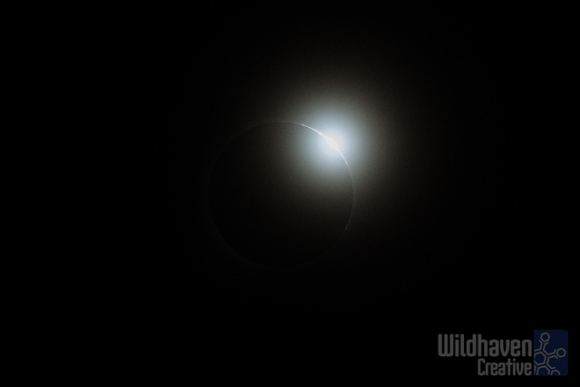
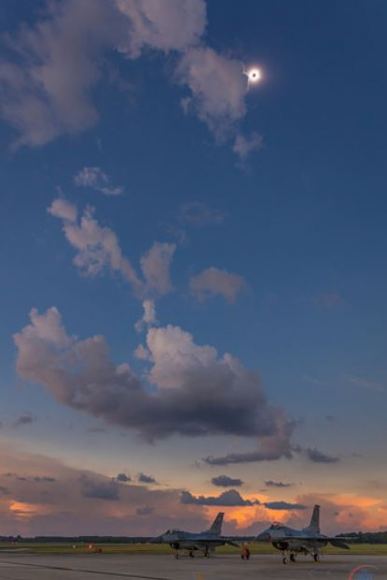
#Eclipse 2017 From Laval. Aug 21 2017. @CosmodomeLaval #meteoqc @universetoday pic.twitter.com/HFAeH695dD
— FelipeSg (@SanFelipeSG) August 21, 2017
#Timelapse of totality over Salem, #Oregon. So cool! #eclipse2017 @universetoday @JimCantore @ericfisher @StephanieAbrams @ZachsORoutdoors pic.twitter.com/TzV4Vil2xq
— Mike Cohea (@MikeCohea) August 21, 2017
Short video I took from McMinnville, TN. Can you see it!!! ?? #Eclipse2017 pic.twitter.com/zVNXvLOLSI
— Holly ? (@absolutspacegrl) August 21, 2017
That moment of #SolarEclipse2017 pic.twitter.com/8u8Xz79aWi
— Zaid Benjamin (@zaidbenjamin) August 21, 2017
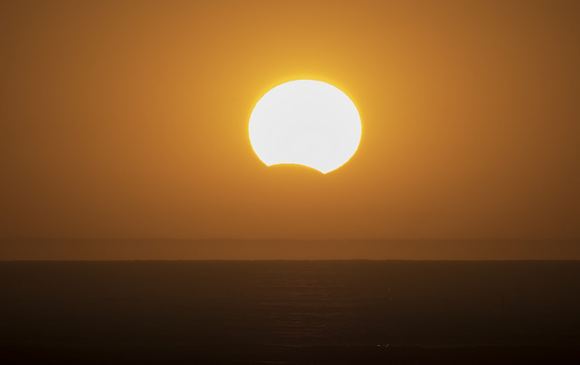
Aerial panorama of the total solar eclipse over Kansas. Two minutes earlier it was still raining. #eclipse #eclipse2017 @DJIGlobal pic.twitter.com/1zSIsKlZ8E
— Romeo Durscher (@romeoch) August 21, 2017
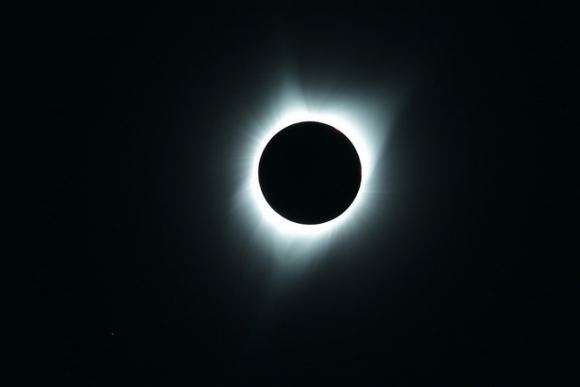
Still sorting through the 850+ photos I shot today, a rough edit #Eclipse2017 pic.twitter.com/r4SC4YABtD
— Tony Rice (@rtphokie) August 21, 2017
Prelude to Totality: A Final Look at the Total Solar Eclipse

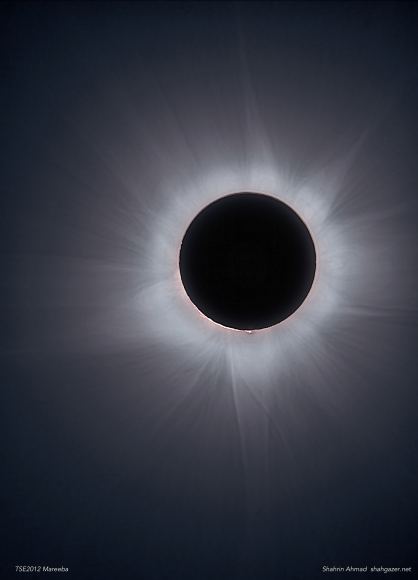
It’s hard to believe: we’re now just one short weekend away from the big ticket astronomical event for 2017, as a total solar eclipse is set to cross over the contiguous United States on Monday, August 21st.
Celestial mechanics is a sure thing in this Universe, a certainty along with death and taxes that you can bet on. But there are still a few key question marks leading up to eclipse day, things that we can now finally make intelligent assumptions about a few days out.
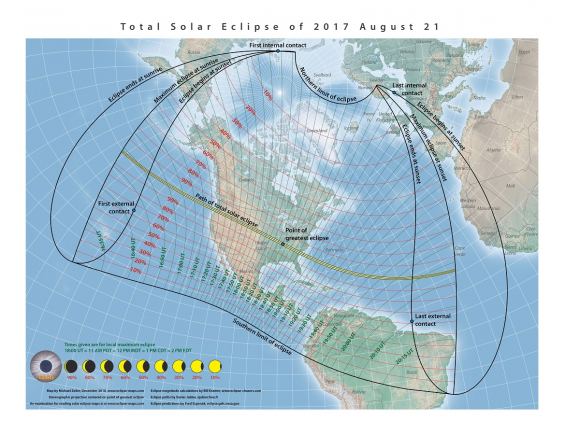
First up is solar activity. If you’re like us, you’ll be showing off the Sun in both visible and hydrogen alpha as the Moon begins making its slow hour long creep across the disk of Sol. First, the good news: sunspot active region AR 2671 made its Earthward debut on Tuesday August 15th, and will most likely stick around until eclipse day. The bad news is, it most likely won’t have lots of friends, as solar cycle #24 begins its long slow ebb towards the solar minimum in 2019-2020. Likewise, I wouldn’t expect to see any magnificent sprouting red prominences in the solar chromosphere in the seconds bracketing totality, though we could always be pleasantly surprised.
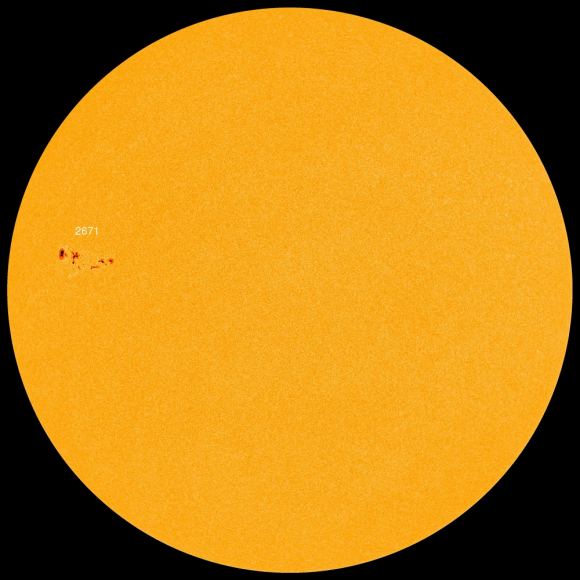
How will the white hot corona appear during totality? This is the signature climax of any total solar eclipse: veteran umbraphiles can actually glance at a photo of totality and tell you which eclipse it was from, just on the shape of the corona. The National Solar Observatory released a model of what that Sun’s magnetosphere was doing one Carrington rotation (27 days) prior to the eclipse on July 25th, a pretty good predictor of the corona might look like during those fleeting moments of totality:
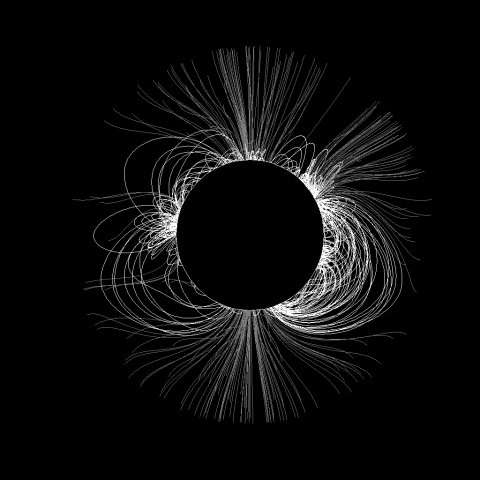
NASA will be chasing the umbra of the Moon with two converted W-57 aircraft during the eclipse, hoping to unlock the “coronal heating paradox,” image Mercury in the infrared, and hunt for elusive Vulcanoid asteroids near the eclipsed Sun.
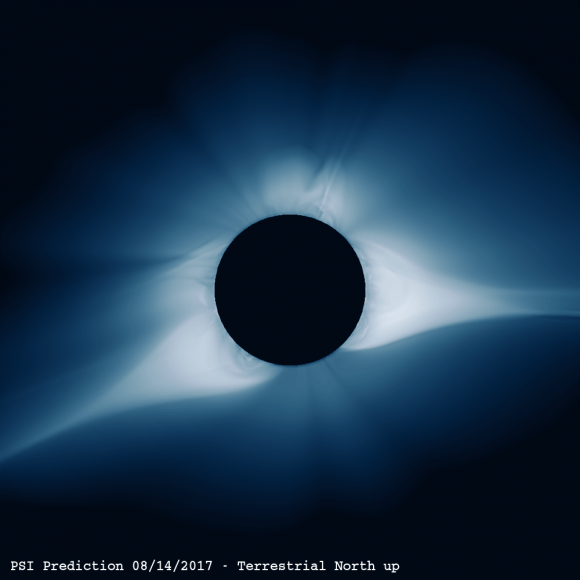
The corona is about twice as bright as a Full Moon, and its interface with the solar wind extends out past the Earth. The very onset of totality is like the footstep of a giant passing over the landscape, as the door of reality is suddenly ripped open, revealing the span of the glittering solar system at midday. Keep your eyes peeled for Mercury, Venus, Mars, Jupiter and twinkling Regulus tangled up in the corona, just a degree from the Sun-Moon pair:
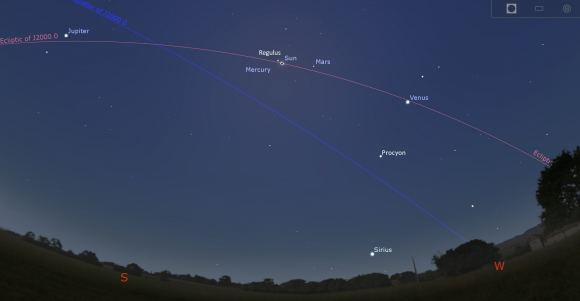
Also, be sure to scan the local horizon for a strange 360 degree sunset as you stand in the umbra of the Moon. An “eclipse wind” may kick up, as temperatures plummet and nature is fooled by the false dawn, causing chickens to come home to roost and nocturnal animals to awaken. I dare you to blink. Totality can affect the human heart as well, causing tears to cries of surprise.
Here’s an interesting, though remote, possibility. Could a sungrazing “eclipse comet” photo bomb the show? Karl Battams (@SungrazerComets) raises this question on a recent Planetary Society blog post. Battams works with the Solar Heliospheric Observatory (SOHO), which has discovered an amazing 3,358 comets crossing the field of view of its LASCO imagers since 1995. Comets have been discovered during eclipses before, most notably in 1882 and 1948. To be sure, it’s a remote possibility this late in the game, but Battams promises to give us one last quick look via SOHO the morning of the eclipse on his Twitter feed to see if any cometary interlopers are afoot.
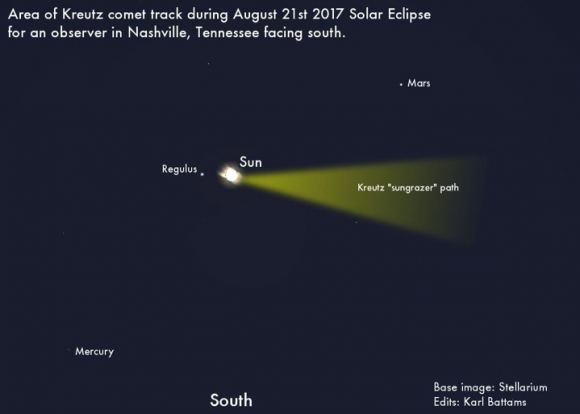
Now, on to the biggest question mark going into this eclipse weekend: what’s the weather going to be like during the eclipse? This is the ever-dominating factor on everyone’s mind leading up to eclipse day. Keep in mind, the partial phases are long; even a partly cloudy sky will afford occasional glimpses of the Sun during the partial phases of an eclipse. Totality, however, is fleeting – 2 minutes and 40 seconds near Hopkinsville, Kentucky and less for most – meaning even a solitary cumulus cloud drifting across the Sun at the wrong moment can spoil the view. No weather model can predict the view of the sky to that refined a level. And while best bets are still out west, lingering forest fires in Oregon are a concern, along early morning fog on the western side of the Cascade Mountains. Michael Zeiler over at The Great American Eclipse has been providing ESRI models of the cloud cover over the eclipse path for Monday… here’s the outlook as of Thursday, August 17th:
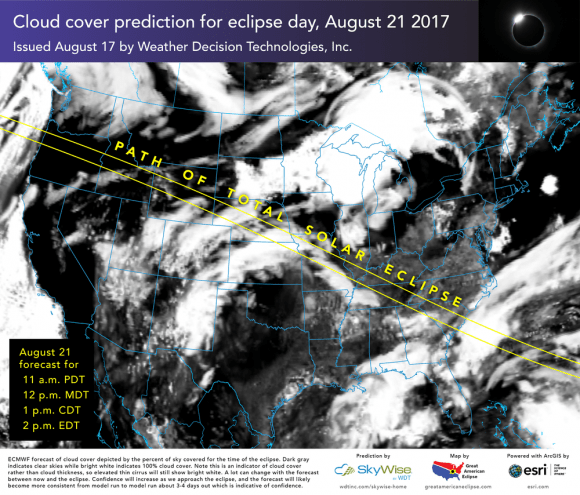
Computer models should begin to come into agreement this weekend, a good sign that we know what the weather is going to do Monday. Needless to say, a deviation from the standard climate models could send lots of folks scrambling down the path at the last minute… I’ve heard of folks with up to 5 (!) separate reservations along the path of totality, no lie…
The NOAA also has a fine site dedicated to weather and cloud coverage across the path come eclipse day, and Skippy Sky is another great resource aimed at sky viewing and cloud cover.
Clouded out? The good folks at the Virtual Telescope have got you covered, with a webcast for the total solar eclipse starting at 17:00 UT/1:00 PM EDT:
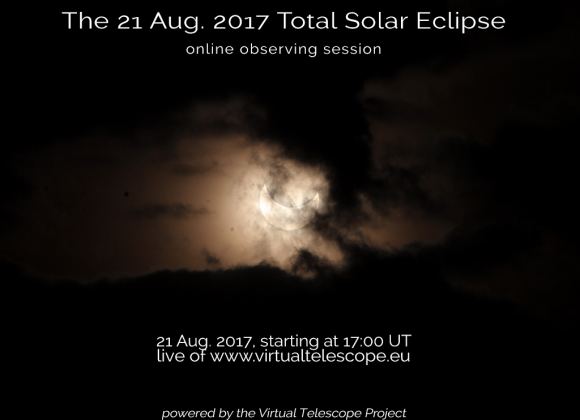
Of course, you’ll need to use proper solar viewing methods during all partial phases of the eclipse. This means either using a telescope with a filter specifically designed to look at the Sun, a pin hole projector, or certified ISO 12312-2 eclipse glasses. If you’ve got an extra pair, why not convert them into a safe filter for those binoculars or a small telescope as well:
Also be wary of heatstroke, standing out showing folks the partially eclipsed Sun for an hour or more. It is August, and heat exhaustion can come on in a hurry. Be sure you have access to shade and stay cool and hydrated in the summer Sun.
Finally, eyes from space will be watching the eclipse from the International Space Station as well. Looking out at Monday, the ISS will pass through the penumbra of the Moon and see partial phases of the eclipse three times centered on 16:32, 18:20, and 20:00 Universal Time. The center time is particularly intriguing, as astros have a chance to see the dark umbral shadow of the Moon crossing the central U.S. This also means that eclipse viewers on planet Earth around southern Illinois might want to glance northward briefly, to spy the ISS during totality. Also, viewers along a line along southern central Canada will have a chance to catch an ISS transit across the face of the partially eclipsed Sun around the same time. Check CALSky for details.

We’ll be at the Pisgah Astronomical Research Institute in southwestern North Carolina, for a glorious 104 seconds of totality. We expect to be out of wifi range come eclipse day, but we’ll tweet out key eclipse milestones as @Astroguyz. We also plan on writing up the eclipse experience with state-by-state testimonials post eclipse.
Perhaps, the August 21st total solar eclipse will bring us all together for one brief moment, to witness the grandest of astronomical spectacles. We’re lucky to share a small patch of time and space where total solar eclipses are possible. Good luck, clear skies, and see you on the other side early next week!
- Read more about the August 21st total solar eclipse and the true tale of Edison’s chickens and the 1878 eclipse in our free e-book: 101 Astronomical Events for 2017.
- The oldest video featuring totality? Read the mystery of the August 21st, 1914 over war torn Europe and this amazing video over Sweden.
- Eclipse… sci-fi? Read our original eclipse-fueled tales Exeligmos, Shadowfall, Peak Season and more.
- Read our CNN Op-Ed, Why We Chase Eclipses.
Gorgeous Images of the August 2017 Partial Lunar Eclipse

Just to get you in the mood for the upcoming total solar eclipse — now less than two weeks away — our Solar System put on a little eclipse display of the lunar kind on August 7. The full Moon passed through part of the Earth’s umbral shadow, and the timing made this partial lunar eclipse visible in parts of Europe and Africa.
Thanks to our friends around the world who posted in Universe Today’s Flickr page, we’ve got images to share! Enjoy the views! Click on all the images to see larger versions of them on Flickr. The lead image link is here.
And for those of you in the path of the August 21 solar eclipse, please feel free to share your images on our Flickr page, and we may feature them in an upcoming article.
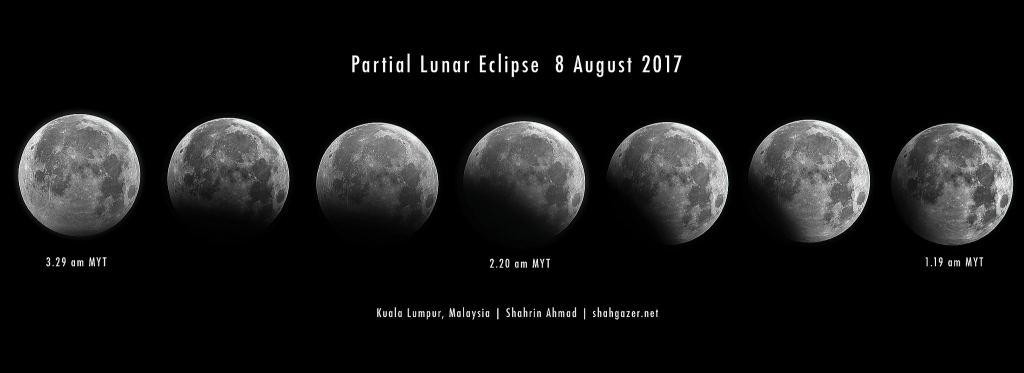
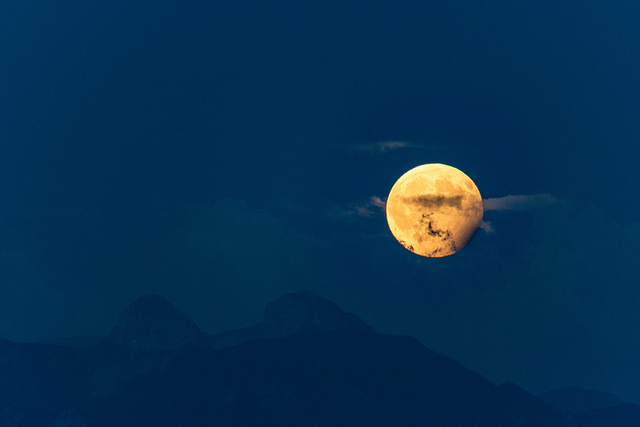
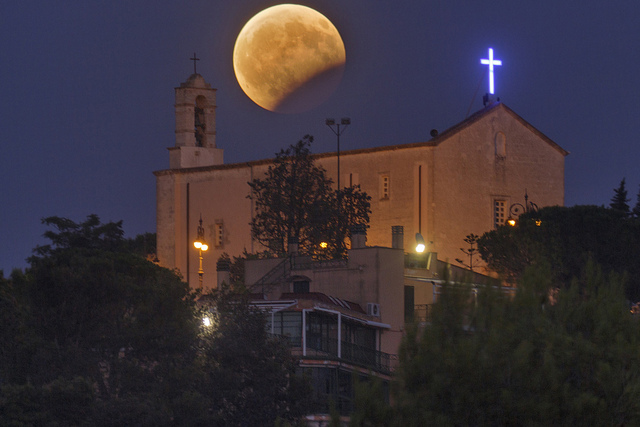
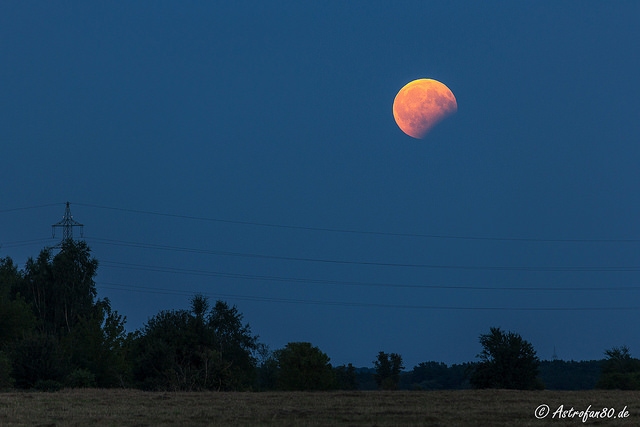
Eclipsed full moon over the eastern horizon as seen from Treppendorf, Brandenburg, Germany. Credit and copyright: Andreas Schnabel.
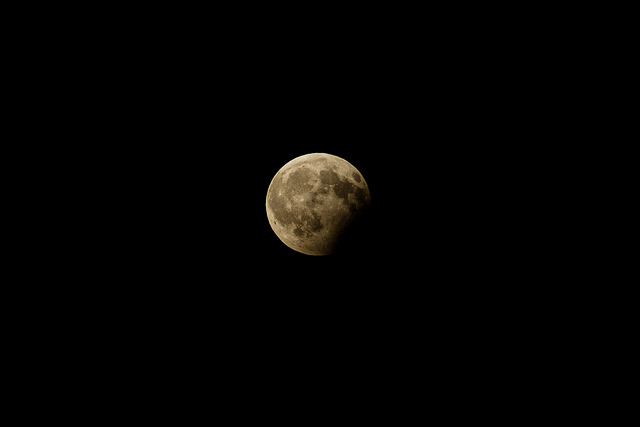
Stephan Haverland.
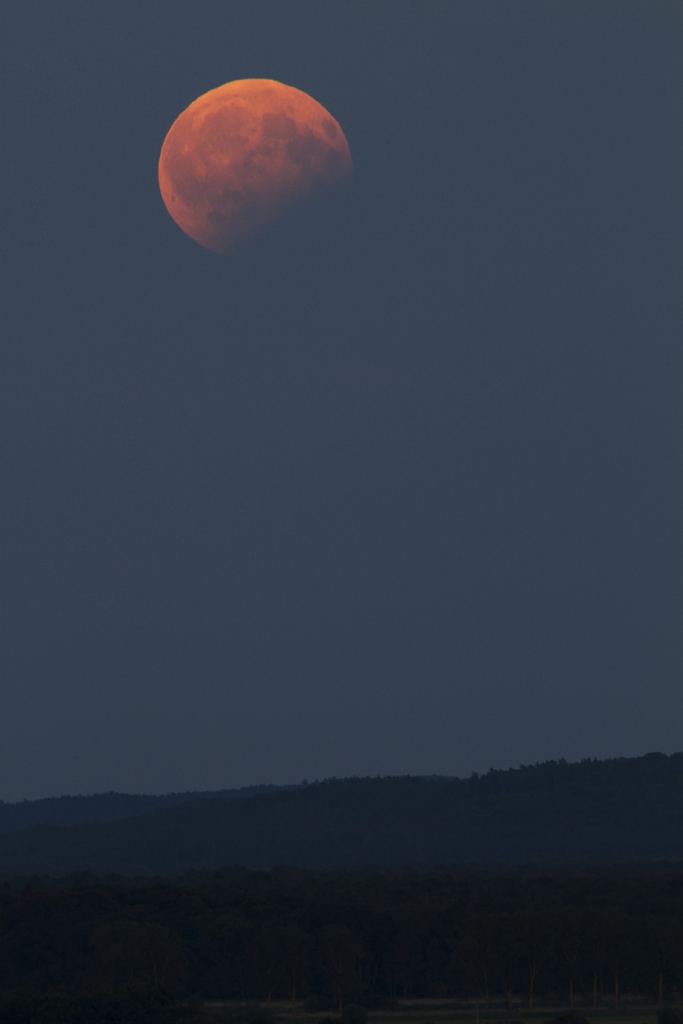
Pawel Warchal.
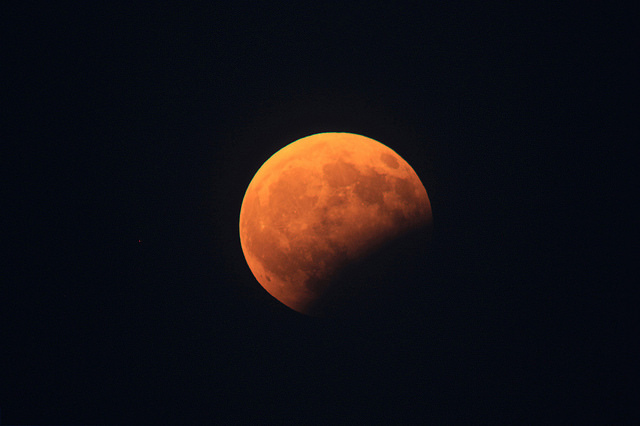
Here is a video of additional images from Leonard Mercer:
You can watch a reply of a live webcast from the Virtual Telescope Project of the partial lunar eclipse seen from Rome:
Join the Eclipse MegaMovie 2017 Chronicling the August Total Solar Eclipse
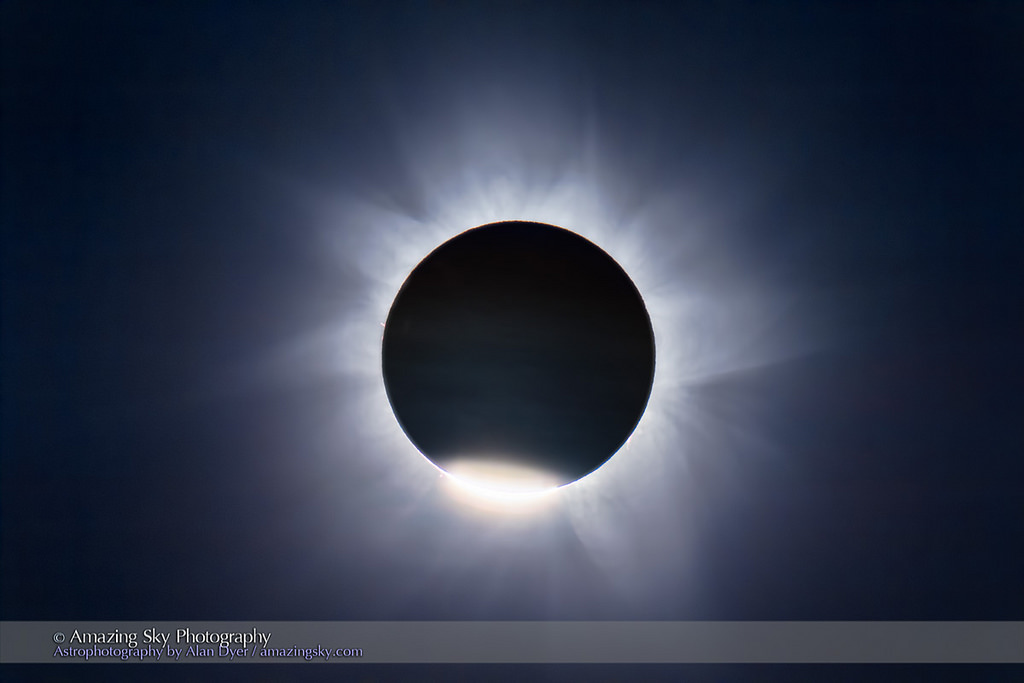
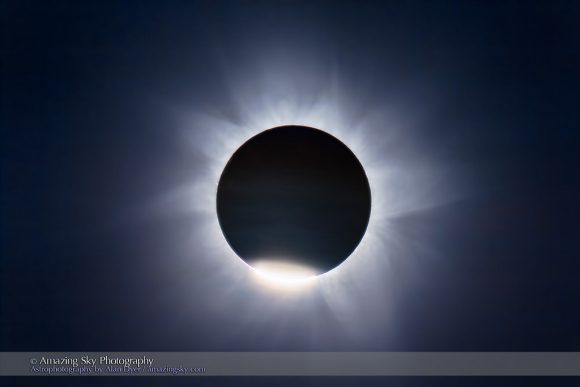
Ready for the “Great American Eclipse?” We’re now less than six months out from the long-anticipated total solar eclipse spanning the contiguous United States from coast-to-coast. And while folks are scrambling to make last minute plans to stand in the path of totality on Monday, August 21st 2017, a unique project named the Eclipse Megamovie 2017 seeks seeks to document the view across the entire path.
The Project: Sponsored by Google’s Making & Science Initiative and led by Scott McIntosh from the National Center for Atmospheric Research’s High Altitude Observatory and Hugh Hudson from the University of California at Berkeley, the Eclipse Megamovie Project seeks to recruit 1,500 observers stationed across the eclipse path from Oregon to South Carolina. Although individual observers will only experience a maximum totality length of 2 minutes and 40 seconds, the complete span of the Eclipse Megamovie will last 90 minutes, compiled using observer images from coast-to-coast.
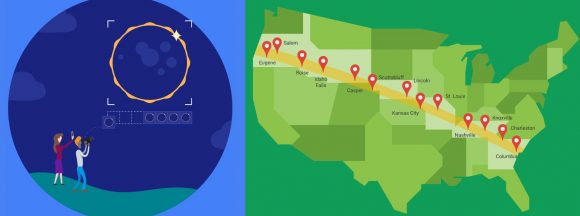
“The movie is a tool for scientific exploration,” Hudson said in a recent University of California at Berkeley press release. “We’ll be collecting this level of data for the first time, from millions of observers, and it will be a valuable archive. But we don’t know what we’ll see or what we’ll learn about the interactions between the chromosphere and the corona.”
One portion of the project will have trained volunteers image the Sun from along the eclipse path using DSLRs, while another portion of the project will feature smartphone users imaging totality using a forthcoming Eclipse Megamovie app for a full length lower resolution movie.
Bikers and Baily’s Beads
The only total solar eclipse for 2017, totality for this eclipse occurs along a 114 kilometer-wide path touching on 12 states. Millions live within an easy day drive of the eclipse path, so expect lots of general public interest leading up to eclipse day. August is RV and camping season, so expect camplots to fill up quickly as well. The eclipse also occurs just over a week after the annual Biker’s Rally in Sturgis, South Dakota, affording motorcyclists a chance to stand in the shadow of the Moon en route to the annual pilgrimage.
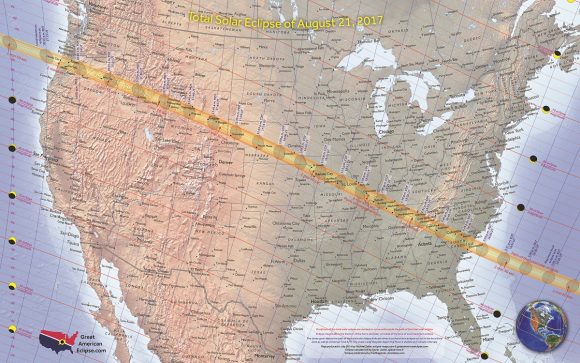
The last total solar eclipse to cross one of the 50 United States graced Hawaii on July 11th, 1991, and the last time the umbra of the Moon touched down over the lower 48 states was on February 26th, 1979 across the United States northwest. But you have to go all the way back over almost a century ago to June 8th, 1918 to find an eclipse featuring totality which exclusively spanned the United States from sea to shining sea.
Observers have chased after the umbra seeking to extend fleeting totality before. Eclipse chasers documented the January 24th, 1925 eclipse from aloft aboard a dirigible over New York City. On June 30th, 1973, a supersonic Concorde flight chased the umbra of the Moon across northern Africa, extending totality out to 74 minutes.
The team was also on hand to perform a dry run test of the Megamovie Project at this past weekend’s annular eclipse which crossed South America, the Southern Atlantic and Africa and reports that the field test of the promised project app by Mark Bender worked admirably, and the Eclipse Megamovie App should be available to the general public soon.
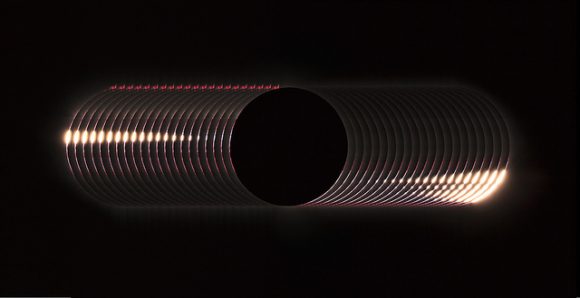
What sort of science can such a project offer? What is left to learn from a total solar eclipse after centuries of scientific study? Well, some of the most accurate measurements of the solar diameter and the size and shape of the Sun have been made during solar eclipses. A long movie may also reveal streamers and development of the solar corona, the ethereal pearly white glowing outer atmosphere surrounding the Sun. About half as bright as a Full Moon, we only get a brief glimpse of the corona during totality. Also, the Eclipse Megamovie will get another shot at the project in April 2024, when another eclipse crosses the United States from Texas to Maine.
The Eclipse Megamovie is taking volunteers now. The gear setup required is simple, and you might have what’s needed to image the eclipse laying around already.
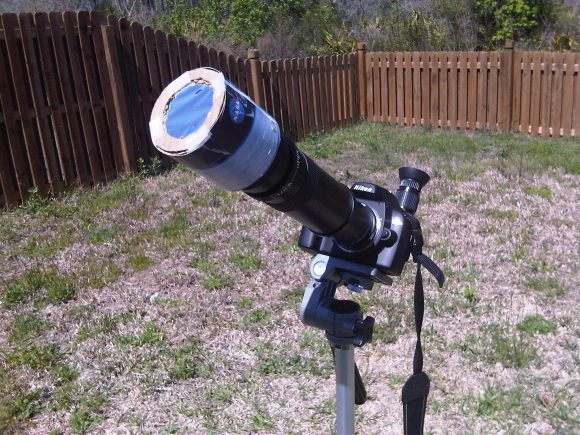
You’ll need a DSLR camera with a sturdy tripod, a zoom or fixed lens of 300mm focal length or better, and an ability to nail down your GPS location and the time to the nearest second. Once the volunteers are selected, training will be provided to include GPS and time stamping images, flat-fielding and more.
Phone apps will readily supply the GPS part. For time, I’d go with with WWV Radio, which broadcasts a continuous audio time hack out of Fort Collins, Colorado. This is in Universal Time, and has an accuracy of better than a second better than online time sources, which occasionally lag due to spurious web connections.
Keep in mind, you’ll be photographing the eclipsed Sun during very brief moments of totality. You’ll need to have approved solar glasses and filters in place during all partial phases leading up to and immediately after the eclipse. The Eclipse Megamovie project also hopes to catch sight of the Bailey’s Beads phenomenon as final streamers of sunlight pour through the lunar valleys, giving the illusion known as the Diamond Ring effect.
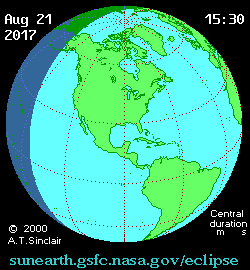
And us? We’ll be casting our hubris at the Universe and catch the eclipse from Columbia, South Carolina. We’re heeding the advice of veteran eclipse chasers, and simply enjoying our first eclipse, and imaging our second, though we may sneak in a few shots for the Eclipse Megamovie project. Universe Today publisher Fraser Cain and astronomer and AstronomyCast host Pamela Gay will lead a group watching from southern Illinois, and we’ve also heard from many other observers from around the world who’ll be visiting the U.S. the August… where will you be?
And we’ve already got a spot picked out for 2024, as the next total solar eclipse crosses Aroostook County and our hometown of Mapleton, Maine… hey, you can never start planning too early, right?
Get set for an eclipse for the ages, and be sure to contribute to the Eclipse Megamovie Project.
-Read about all eclipses, comets, occultations and more for the year in our guide to 101 Astronomical Events for 2017, free from Universe Today.
-Eclipse… science fiction? Check out our original eclipse-fueled sci-fi tales Exeligmos, Shadowfall, the Syzygy Gambit, Peak Season and more.
Ring of Fire: Catch the Only Annular Solar Eclipse of 2017 This Sunday
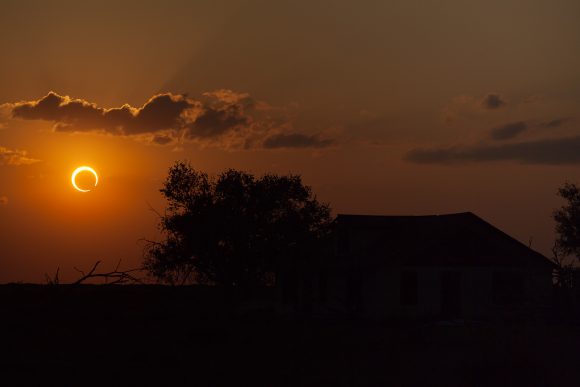
‘Tis the season… eclipse season that is, as a spectacular “ring of fire” annular solar eclipse marks the end of the first of two eclipse cycles for 2017. And although the annular path for this eclipse passes through some sparsely populated parts of the southern hemisphere, we just might get some amazing live views, courtesy of modern technology and some intrepid observers willing to adventurously trek after the shadow of the Moon.
Unlike many of the uncertainties in life, eclipses are sure to happen, a certainty ordained by orbital mechanics. Well, okay, the Vogons could always blow the Moon to smithereens this fine Thursday afternoon… but otherwise, we’re in for a true celestial show.
Eclipse circumstances: Prospects and prognostications.
The eclipse begins far out in the South Pacific at sunrise, and the path of annularity makes first landfall along the southern coast of Chile at 13:31 Universal Time (UT). The eclipse antumbra then races eastward over Argentina at 2.5 kilometers per second, as the “ring of fire” heads out over the South Atlantic where it reaches “maximum annularity” of just 44 seconds 900 kilometers southeast of Brazil. Finally, the 30 kilometer wide path touches down over Angola, nicks Zambia and ends at sunset over a southern track along the Democratic Republic of the Congo. The eclipse is partial across southern portion of South America, the Falkland Islands a swath of Antarctica and southwestern Africa.
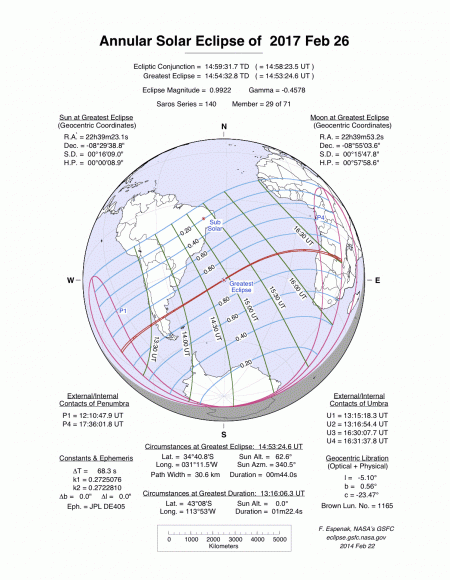
Here are the partial prospects for select cities:
City – Maximum obscuration – Time
La Paz, Bolivia – 5% – 13:37 UT
Buenos Aires – 67% – 13:53 UT
The Falkland Islands – 71% – 13:56 UT
Palmer Station, Antarctica – 31% – 14:01 UT
Cape Town, South Africa – 41% – 15:59 UT
Luanda, Angola – 83% – 16:32 UT
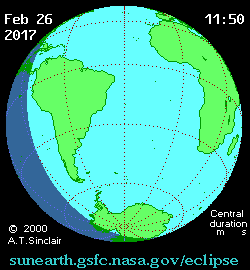
Annular vs. Total
Sunday’s eclipse is the first of two solar eclipses for 2017, and the only annular eclipse for the year. We get an annular eclipse when the Moon is near apogee (which occurred eight days ago on February 18th) and the Earth is near perihelion (which occurred last month on January 4th). At this time, the apparent size of the Moon is too small to cover the Sun as seen from the Earth, resulting instead in a brilliant annulus or “ring of fire” in the sky. Likewise, we refer to the shadow trace of this ring across the Earth as an antumbra, instead of the familiar umbra of a total solar eclipse.
Strange as it may seem, annular eclipses are slightly more common than total solar eclipses in our current epoch, and will become increasingly more so as the Moon slowly recedes from the Earth.

Observing and Eclipse Safety
Unlike a total solar eclipse, safety precautions must be taken during all phases of an annular solar eclipse. We witnessed the 1994 annular eclipse from the shores of Lake Erie, and can attest that 1% of the Sun is still pretty darn bright. Use only telescope and camera filters or glasses designed specifically for solar observing, even during the annular phase. Venus should also be a splendid sight for those observing near sunset from Africa, as the Cytherian world shines at -4.3 magnitude 34 degrees east of the Sun. Viewers in southwestern African nations will also be treated to a setting Sun during the eclipse, affording the chance to include the spectacle in shots along with foreground objects on the local horizon if skies are clear.
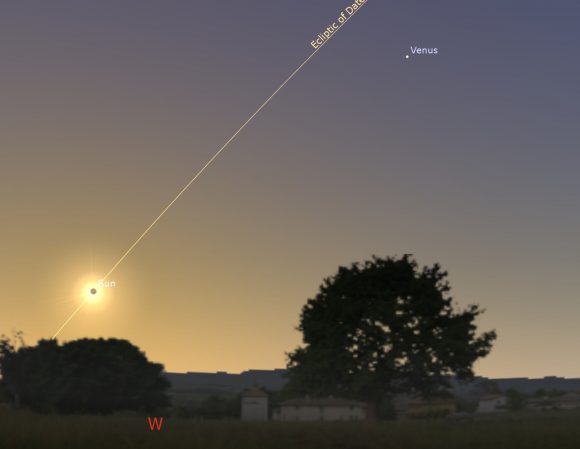
Clouded out? Live on the wrong part of the planet? There are actually several options to watch the eclipse live:
the venerable SLOOH plans to webcast the eclipse.
Time and Date will provide a webcast starting at 12:05 UT from Angola:
Watch this space: we’ll be dropping in more live webcasts of the eclipse as they turn up.
Update: VTR Chile may provide a live broadcast come eclipse time.
Plan on doing an ad hoc webcast of Sunday’s eclipse from anywhere along the annular or partial track? Let us know!
Sunspot activity is currently at a lull, and the Earthward face of Sol may well be blank come eclipse day. At an eclipse magnitude of 99.22%, this eclipse juuuusst misses being a hybrid/total. It’s also possible to catch the brief flashes of Bailey’s Beads along the edge of the antumbral graze line.
Tales of the Saros
This eclipse is member 29 of 71 for saros cycle 140, stretching all the way back to April 16th, 1512 and running out to June 1st, 2774. If you caught the February 16th, 1999 annular eclipse from the Australian Outback, then you witnessed the last eclipse in saros 140. Stick around until March 9th, 2035 and you can then complete an exeligmos or triple saros cycle, joining an elite club of eclipse-chasing adventurers, indeed.
Eclipses occur in pairs or sometimes triplets, when the nodes where the Moon’s orbit intersect the position of the Sun and the Earth’s shadow along the ecliptic plane. These nodes move due to orbital precession of the Moon’s path around the Earth. If the Moon weren’t inclined relative to the ecliptic, we’d see a lunar and solar eclipse every synodic month. The February 11th penumbral eclipse ushered in the current eclipse season, which ends with this weekend’s annular eclipse.
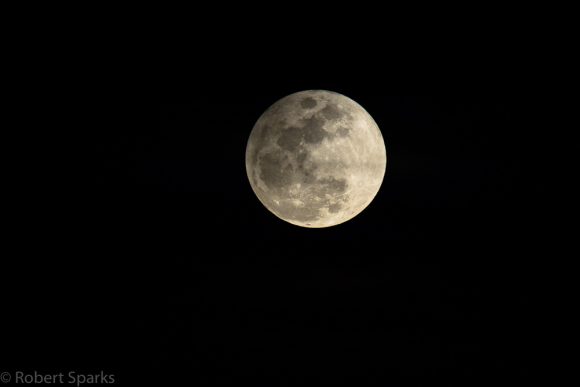
ISS and Views from Space (-ace -ace) Prospects
There is an ISS transit over SW Africa at around 15:45 UT, offering a chance to catch a transit of the station across the partially eclipsed Sun. Sun observing spacecraft in low Earth orbit including Hinode and Proba-2 also usually get good views of the eclipse.
New Moon sightings: And for the rest of the world, the hunt will be on to recover the slim waxing crescent Moon post-eclipse on the evening of Monday, February 27th. This lunation, first sighting opportunity without optical assistance favors southeast Asia.
Then, its on to eclipse season number two, featuring a partial lunar eclipse on August 7th, and then the big ticket event: the total eclipse of the Sun spanning the contiguous United States from coast to coast. Umbraphiles have been planning for this one and its brief 160 seconds maximum of totality for well over a decade now, no lie. Where will YOU be?
-Send those eclipse pics in to Universe Today Flickr.
-Read more about eclipses, occultations, comets and more for the year in our free e-book: 101 Astronomical Events for 2017.
-Eclipse science fiction? Read our original sci-fi tales Exeligmos, The Syzygy Gambit, Peak Season and more.
Watch the Moon Make a Pass at Earth’s Shadow, Then Kiss Regulus This Valentine’s Weekend
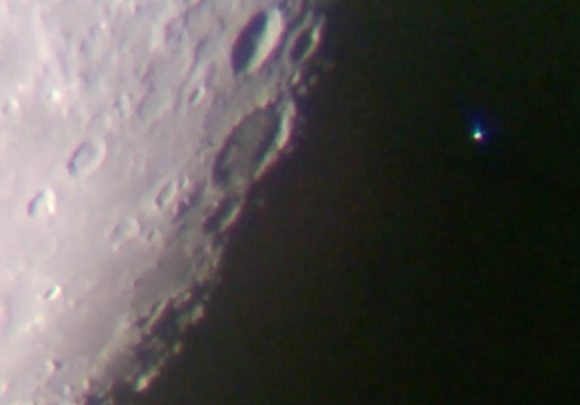
In the southern hemisphere this weekend in the ‘Land of Oz?’ Are you missing out on the passage of Comet 45/P Honda-Mrkos-Pajdušáková, and the penumbral lunar eclipse? Fear not, there’s an astronomical event designed just for you, as the Moon occults (passes in front of) the bright star Regulus on the evening of Saturday, January 11th.
The entire event is custom made for the continent of Australia and New Zealand, occurring under dark skies. Now for the bad news: the waning gibbous Moon will be less than 14 hours past Full during the event, meaning that the ingress (disappearance) of Regulus will occur along its bright leading limb and egress (reappearance) will occur on the dark limb. We prefer occultations during waxing phase, as the star winks out on the dark limb and seems to slowly fade back in on the bright limb.
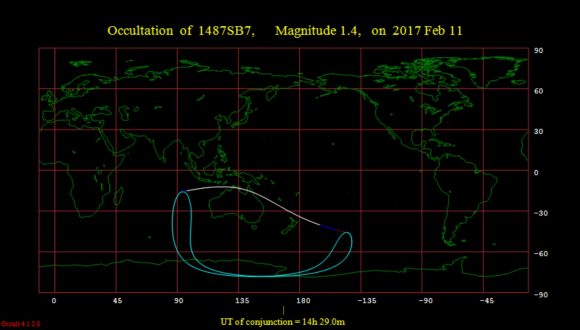
The International Occultation Timing Association has a complete list of precise ingress/egress times for cities located across the continent. An especially interesting region to catch the event lies along the northern graze line across the sparsely populated Cape York peninsula, just north of Cairns.
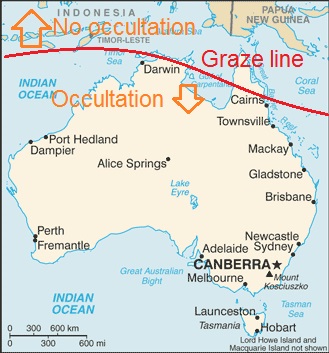
The Moon occults Aldebaran and then Regulus six days later during every lunation in 2017. This is occultation number three in a cycle of 19 running from December 18, 2016 to April 24, 2018. The Moon occults Regulus 214 times in the 21st century, and Regulus is currently the closest bright star to the ecliptic plane, just 27′ away.
We’ve also got a very special event just under 14 hours prior, as a penumbral lunar eclipse occurs, visible on all continents… except Australia. Mid-eclipse occurs at 00:45 Universal Time (UT, Saturday morning on February 11th), or 7:45 PM Eastern Standard Time (EST) on the evening of Friday, February 10th, when observers may note a dusky shading on the northern limb of the Moon as the Moon just misses passing through the dark edge of the Earth’s inner umbral shadow. Regulus will sit less than seven degrees off of the lunar limb at mid-eclipse Friday night.
How often does an eclipsed Moon occult a bright star? Well, stick around until over four centuries from now on February 22nd, 2445, and observers based around the Indian Ocean region can watch just such an event, as the eclipsed Moon also occults Regulus. Let’s see, I should have my consciousness downloaded into my second android body by then…
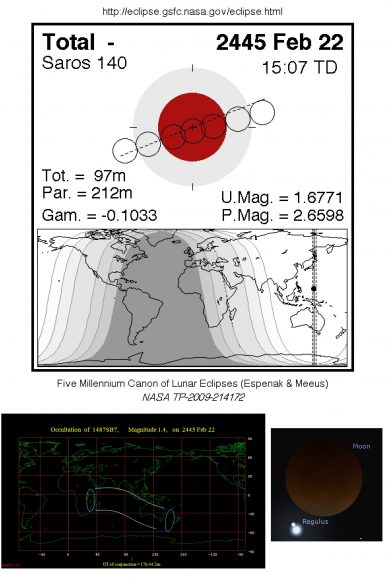
We’ll be streaming the Friday night eclipse live from Astroguyz HQ here in Spring Hill, Florida starting at 7:30 PM EST/00:30 UT, wifi-willing. Astronomer Gianluca Masi of the Virtual Telescope Project will also carry the eclipse live starting at 22:15 UT on the night of Friday, February 10th.
This eclipse also marks the start of eclipse season one of two, which climaxes with an annular eclipse crossing southern Africa and South America on February 26th. The second and final eclipse season of 2017 starts with a partial lunar eclipse on August 7th, which sets us up for the Great American Eclipse crossing the United States from coast to coast on August 21st, 2017.
A lunar occultation of Regulus also provides a shot at a unique scientific opportunity. Spectroscopic measurements suggest that the primary main sequence star possesses a small white dwarf companion, a partner which has never been directly observed. This unseen white dwarf may – depending on the unknown orientation of its orbit – make a brief appearance during ingress or egress for a fleeting split second, when the dark limb of the Moon has covered dazzling Regulus. High speed video might just nab a double step occlusion, as the white dwarf companion is probably about 10,000 times fainter than Regulus at magnitude +11 at the very brightest. Regulus is located 79 light years distant.
Our best results for capturing an occultation of a star or planet by the Moon have always been with a video camera aimed straight through our 8” Schmidt-Cassegrain telescope. The trick is always to keep the star visible in the frame near the brilliant Full Moon. Cropping the Moon out of the field as much as possible can help somewhat. Set up early, to work the bugs out of focusing, alignment, etc. We also run WWV radio in the background for an audible time hack on the video.

The best occultation of Regulus by the Moon for North America in 2017 occurs on October 15th, when the Moon is at waning crescent phase. Unfortunately, the occultation of Regulus by asteroid 163 Erigone back in 2014 was clouded out, though the planet Venus occults the star on October 1st, 2044. Let’s see, by then I’ll be…
Comets and eclipses and occultations, oh my. It’s a busy weekend for observational astronomy, for sure. Consider it an early Valentine’s Day weekend gift from the Universe.
Webcasting the eclipse or the occultation this weekend? Let us know, and send those images of either event to Universe Today’s Flickr forum.
Read about eclipses, occultations and more tales of astronomy in our yearly guide 101 Astronomical Events For 2017, free from Universe Today.
Ancient Annular: Dating Joshua’s Eclipse
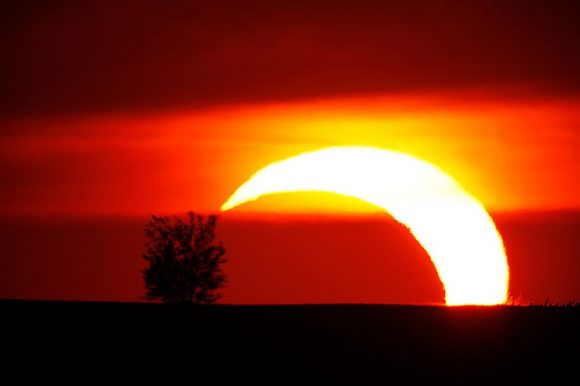
Astronomy turns up in fascinating junctures in history. Besides just the romantic angle, we can actually pin down contextual events in ancient history if we can tie them in with a spectacle witnessed in the heavens. A recent look at the story of ‘Joshua’s eclipse’ is one such possible tale.
Lunar and solar eclipses are especially dramatic events, something that would have really made the ancients stop and take notice. A recent study published in an edition of the Beit Mikra Journal (in Hebrew) by researchers from Ben Gurion University may have pinpointed a keypoint in biblical history: the date of the Battle of Gibeon.
This study first came to our attention via the Yahoo! SEML eclipse message board and a recent Times of Israel article. The article makes mention of NASA eclipse data, which is free for anyone to peruse looking over the five millennium canon of solar and lunar eclipses… hey, it’s what we do for fun.
We did obtain a look at a translation of the abstract from the paper, which ends with the following:
“In the period between 1500-1000 BCE which is the relevant time for the biblical story, there were only three eclipses seen from Jerusalem, one total eclipse and two annular eclipses. We show that the most appropriate one is the annular solar eclipse that occurred on October 30 in 1206 BCE at sunset, an appropriate date for the time of conquest and the early settlement period, at the time of Marneptah’ rule in Egypt.”
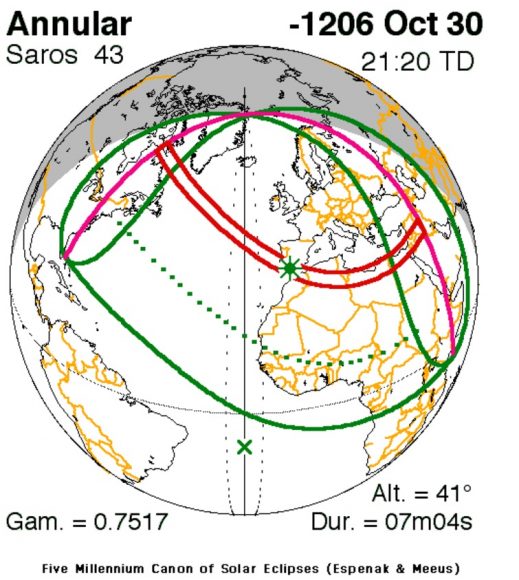
Joshua 10:12 reads: “Sun, stand still upon Gibeon; and you, Moon, in the valley of Ayalon.”
According to tradition, Joshua commanded the Sun to stand still long enough to defeat the Canaanite kings. Of course, the Sun and the Moon still move during an eclipse be it lunar or solar, though its mostly our planet that’s doing the moving. Still, the actual biblical term “-dom” is open to interpretation, and the researchers chose the Hebrew “to become dark” instead of the King James translation of “to stand still,” or “stationary”.
If this Bible verse sounds familiar, that’s because it turns up in astronomical history again in medieval Europe, when Church proponents used it as supposed proof of geocentricism.
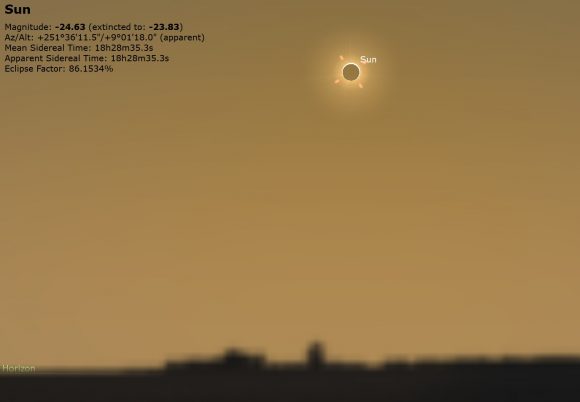
It’s tough to predict eclipses in distant time. The rotation of the Earth is not entirely smooth, and the minute change in the length of the day (known as Delta T) accumulates to the point that a leap second must be inserted on occasion to keep observed time in sync with reckoned terrestrial time. Braking action by the Sun and Moon, tectonic activity, and even global warming all cause small changes in the Earth’s rotation that slowly build up over time. This means that it’s tough to predict eclipses more than a few thousand years out, where at best we can only judge which continent they might have or will fall on.
“Not everyone likes the idea of using physics to prove things from the Bible,” said researcher Hezi Yitzhak to the Israeli news site Haaretz. “We do not claim that everything written in the Bible is true or took place… but there is also a grain of historical truth that has archaeological evidence behind it.”
The eclipse in question occurred on October 30th, 1206 BC. This was an annular eclipse, crossing the Atlantic and the Mediterranean and ending over Israel and Jordan at sunset. Researchers pegged this suspect eclipse because of its fit for historical context and visibility. Annularity for the eclipse was 86% obscuration and started at an altitude of nine degrees above the western horizon, and would have still been in progress during its final phases at sunset.
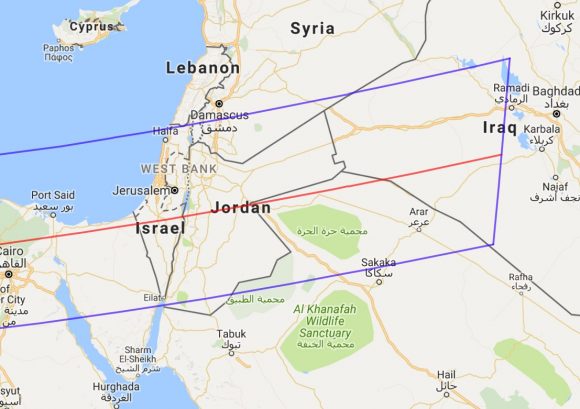
Lots of eclipses turn up in history. A partial lunar eclipse preceded the fall of Constantinople in 1453, seeming to fulfill prophecy. Solar and lunar eclipses made a showing at lots of battles, including the Second Battle of Syracuse on August 28th, 412 BC and during the Zulu War on January 22nd, 1879. A solar eclipse on June 15th, 762 BC mentioned in Assyrian texts pinpoints a crucial time in ancient history, giving us a benchmark for later dates. It’s worth noting that prior to modern times, it seems that battles were the only thing worth writing down…
Still, it’s interesting to imagine the scene as ancient armies clash, only to stop and gaze at the wondrous sight on the horizon: a pair of glowing horns, hanging low in the pre-dusk sky. We caught the 1994 annular eclipse from the Sandusky, Ohio on the shores of Lake Erie and can attest that even a 98% eclipsed Sun is still pretty bright, giving even a clear day a deep steely blue tint. Lower to the horizon though, an annular eclipse is more readily visible to the unaided eye.
You have to be careful when attempting to read ancient texts as astronomical guide books. Great minds, including Kepler and Newton, expended lots of mental juice on attempting to link biblical accounts such as Ezekiel’s Wheel and the Star of Bethlehem with actual astronomical events. We’ll probably never know for sure if a coincidental conjunction graced the sky over the manger in Bethlehem, or if Ezekiel saw the breakup of a brilliant comet, but it’s always fun to imagine and wonder. Then, there’s the inevitable embellishment that accompanies stories that may have been first sparked by meteor showers or sundogs, centuries ago. We don’t, for example, see flaming swords or banners emblazoned with Latin inscriptions across the sky today, though if you can believe medieval accounts, they seemed common back in the day.
And don’t forget: we’ve got our very own history making eclipse (hopefully sans battlefields) this coming August 21st, 2017 crossing the United States from coast-to-coast.
Though far from conclusive, the results of the study concerning Joshua’s eclipse and the battle of Gideon are interesting to consider. Most likely we’ll never truly know what happened that ancient afternoon, unless, of course, we perfect time travel. What other events remain hidden and lost to time, ready for some historical astro-sleuth to uncover them?
-Can’t get enough of eclipses, historical or otherwise? Check out our original eclipse-fueled sci-fi tales Exeligmos, Peak Season and Class Field Trip.

